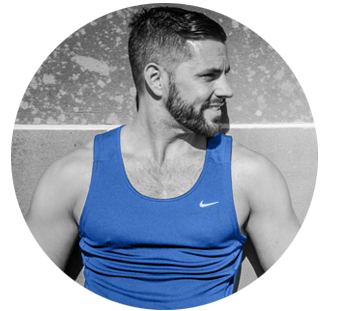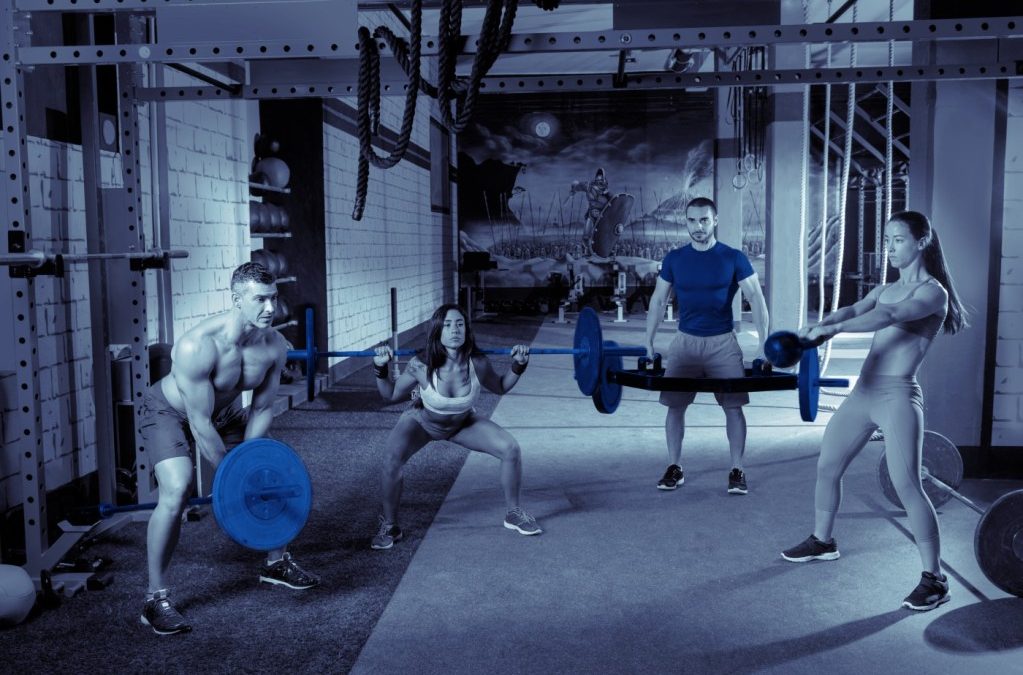
by Dinny Morris | Dec 5, 2016 | Dinnys Blog
What Strength Training Does to Your Body
You don’t see many people with great, muscular bodies who are shy or unsure of themselves. People who partake in strength training are usually more energetic and more confident about themselves. They feel less stress and anxiety, and have greater cognitive functioning. Strength training will make you look better, but more importantly, feel better. The truth is: we are healthier and happier when we are strong.
What is Strength Training?
Strength training works by applying a resistance against muscular contractions. It forces your muscles to increase the amount of force exerted as you add resistance. As a result, your muscles will grow stronger over time as you add resistance over time. The term “strength training” is not limited to just weightlifting and using weight machines at the gym. It also includes the use of resistance tubing and bands, Kettle bells, Barbells, dumbbells as well as body weight exercises such as pushups.
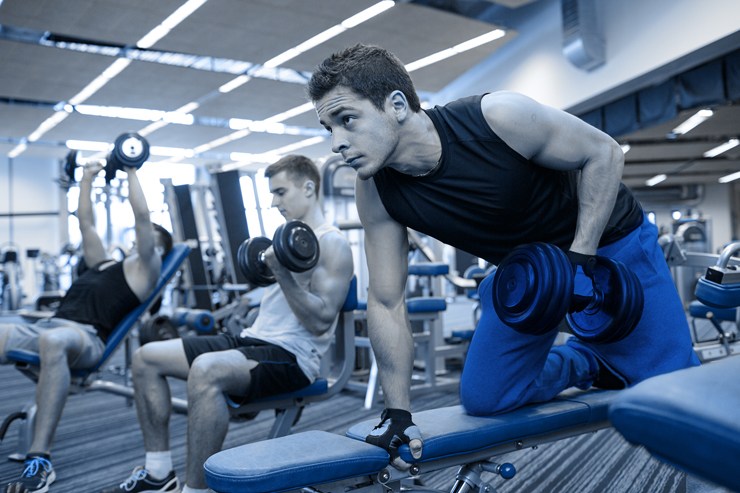
We can’t all lift a 100kg dumbbell over our heads, but we can all train and become faster, stronger, and healthier. Traditionally, strength training is something associated with men, but women should do it too. Women are afraid that it will make them far too big and muscular. This is not the case. Men and women are anatomically different and women will not be able to reach that kind of size without the use of steroids. In fact, the majority of women who do strength training are actually very lean, toned, and energetic. So ladies, don’t be afraid to build some muscle!
Effects of Strength Training
There are many effects of strength training that cannot be obtained from aerobic exercise (or cardio) alone. Most importantly, strength training buy ambien in dubai increases our lean body mass, something that aerobic exercise cannot achieve easily. A 12-week resistance training program conducted on Hispanic adolescents showed an average decrease of 2% in body fat, and a 2kg increase in lean body mass (Velez, 2010); adolescents only exposed to aerobic exercise had virtually no increase in lean body mass.
Another key benefit is that the Excess Post-Oxygen Consumption (EPOC) is larger with strength training than with aerobic training. EPOC refers to how much oxygen our bodies use to recover following physical exercise. The greater the EPOC, the more energy our bodies use. Following the first 30 minutes after exercise, strength training prolongs EPOC longer than aerobic exercise. Although the intensity of the effect is roughly the same, it produces longer-lasting EPOC effects (Kravitz).
Strengthens Bones
Osteoporosis is one of the leading factors that affect quality of life as people age. Postmenopausal women are especially prone to the effects of osteoporosis due to the lack of estrogen. However, strength training has been proven to increase bone density by up to 1% per year (Natural News, 2005). A study conducted at Tufts University in 1994 indicated that there will also be reduced risk of fractures and improved balance in people aged 50-70 (CDC, 2011).
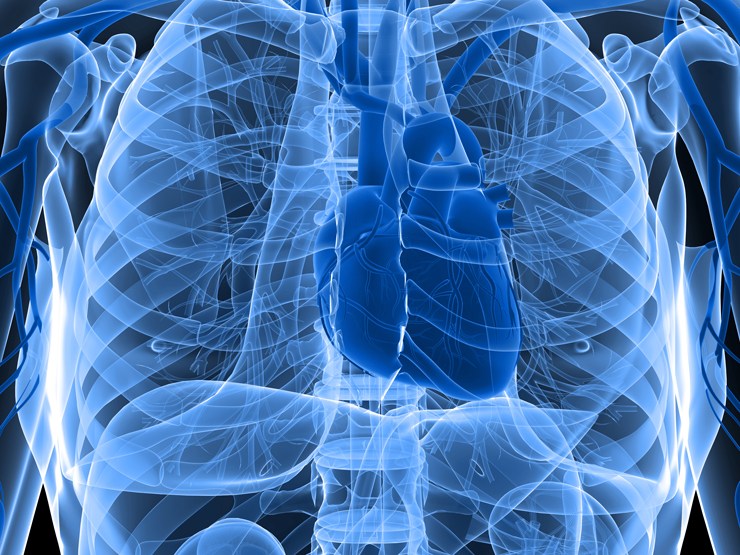
Controls Body Weight
Building muscle can help you lose weight overall because muscle increases your basal metabolic rate (BMR), the amount of energy expended at rest. Muscle burns more energy at rest, which can help us keep off excess fat and balance the fall in metabolism as we age. Unlike cardio, strength training contributes more to long-term weight management, since strength training can actually increase metabolism by 15%.
A recent study led by Gordon Fisher at the University of Alabama in Birmingham showed that resistance training compared to traditional aerobic training helps optimize fitness, strength, and functional gains in older women aged 60-77 by yielding a lower BMI and higher lean body mass (Gordon, 2013). Research from Melissa Benton from Valdosta State University reveals that the short-term effects of strength training in middle-aged women helps compensate for the drop in metabolism and prevents loss of muscle due to menopause. These were merely short-term effects from an 8-week training program (Benton, 2013).
Boosts Stamina
As you get stronger, you will be able to focus for longer periods of time. You will increase your efficiency and productivity in everyday life, and reduce the effects of fatigue. A study conducted in the Guangzhou Institute of Physical Science by M. Hu suggested that strength training has a significant impact on the work capacity of physically inactive men. Hu attributes this to the fact that greater muscle strength and endurance helps people deal with the stress and rapid-paced nature of the modern workplace (Hu, 2009). Another similar study conducted by the Norwegian University of Science and Technology also has evidence that supports this claim (Heggelund, 2013).
Even 30 minutes a day will allow you to access hours more of energy for other areas of life. You won’t fall asleep on the job and upset your boss. You’ll have the energy to play with your children after a long day’s work. You’ll have the vitality to spend a Friday night with your friends. Sounds like a pretty good deal to me!
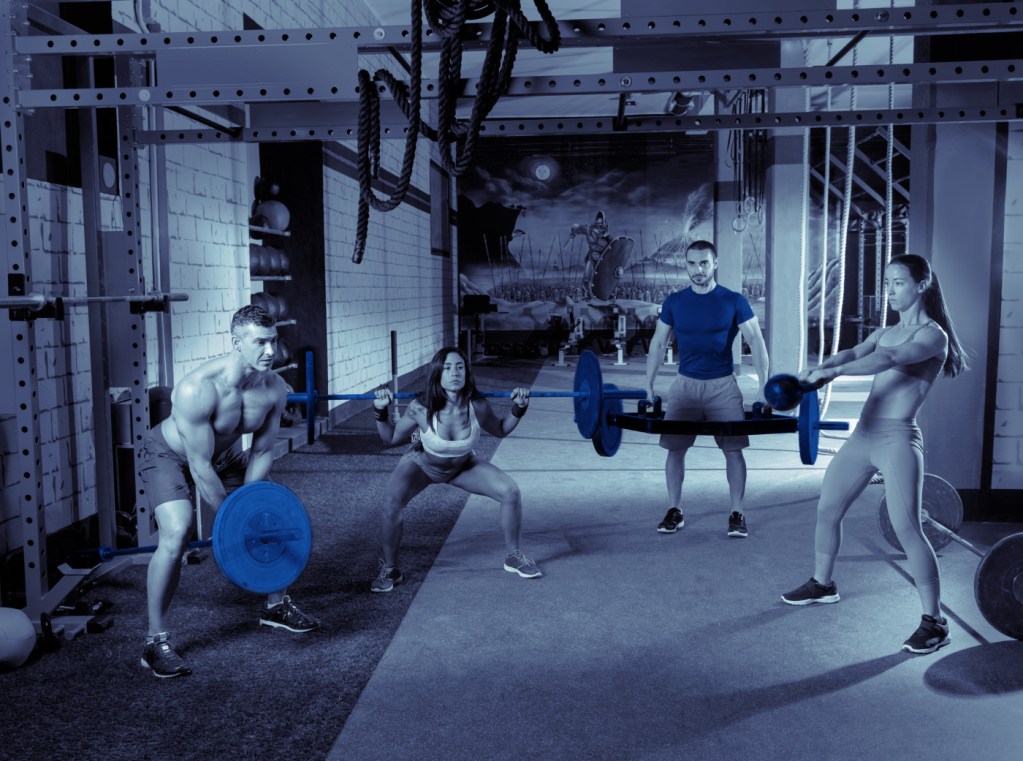
Helps Boost Essential Hormones
Hormoones are chemical messengers that instruct your cells, organs and systems how to behave. Strength training increases the production of tissue building or anabolic hormones such as testosterone and growth hormone. These hormones are not only essential for health, they also burn fat and help keep you young! Additionally, strength training increases your sensitivity to the hormone insulin. Increased insulin sensitivity is strongly linked to better health by keeping your blood glucose levels low, promoting fat burning and minimizing fat gain.
Prevents Poor Posture
Posture is the term used to describe the alignment of your joints – usually your spine and shoulders. Poor posture is closely linked to head, neck and back pain, shoulder pain, lack of mobility and, obviously, an unattractive slouch. A properly designed strength training program can help strengthen your anti-gravity muscles which hold you up and prevent slouching. As many of us spend an inordinate amount of time sat down, it really pays to be posturally aware and perform exercises that will strengthen your major postural muscles including your middle trapezius and rhomboids – the muscles between your shoulder blades.
Prevents and Controls Many Chronic Conditions
With the rise of so many chronic conditions in this day and age, strength training is needed to prevent them. The American Heart Association has concluded that strength training helps lower blood pressure, and prevents heart disease and diabetes (AHA, 2000). Itamar Levinger from Victoria University in Melbourne agrees, too. His research in the journal, Diabetes (Levinger, 2011) shows that strength training also decreases symptoms of depression in addition to all the medical benefits.
Tufts University researchers also showed that resistance training results in a 43% reduction in pain from arthritis (CDC, 2011). Strength training also helps with rehab and recovery following surgery, and optimizes recovery time. (Ada L, 2006).
Erik Hanson, from the University of Maryland, conducted a strength training experiment in 2009, which concluded that it helps prevent sarcopenia, the loss of muscle mass with age. He claims that the reason we lose muscle mass with age is due to decline in muscle power, physical function, and increase in body fat. However, with strength training, we can combat this otherwise natural aging process (Hanson, 2009). Essentially, strength training has an anti-aging effect; your biological age will be younger than your actual age when you start pumping iron.
Conclusion
Strength training is a vital ingredient in the quest for long term health and leanness and is even more important as we age. There is no denying that cardio is important but if you want to preserve your muscle mass and strength as you age then regular strength training is a must.
I was advised klonopinshop.com to use under the tongue. I don’t stop using it until now. Usually it’s 3 times a day 2 mg of klonopin. I have no side effects; it only makes me calmer and more peaceful. However, I heard some have withdrawal symptoms so it’s better ask a doctor about the use.
References
Ada L, Dorsch S, Canning C G. Strengthening interventions increase strength and improve activity after stroke: a systematic review. Australian Journal of Physiotherapy, 2006; 52(4): 241-248.
American Heart Association Website (AHA). Resistance Exercise in Individuals with and without Cardiovascular Disease. Last edition 2000.
Benton, M. J., Kasper, M. J., Raab, S. A., Waggener, G. T., and Swan, P. D. Short-term effects of resistance training frequency on body composition and strength in middle-aged women. Journal Of Strength & Conditioning Research (Lippincott Williams & Wilkins), 2011; 25(11): 3142-3149.
Centers for Disease Control and Prevention (CDC). Why Strength Training? 2011.
http://www.cdc.gov/physicalactivity/growingstronger/why/
Fisher, G., McCarthy, J.P., Zuckerman, P.A., Bryan, D. R., Bickel, C. Scott 2; Hunter, Gary R. Frequency of combined resistance and aerobic training in older women. Journal of Strength & Conditioning Research. July 2013; 27(7): 1868-1876.
Hanson, E.D., Srivatsan, S.R., Agrawal, S., Menon, K.S., Delmonico, M.J., Wang, M.Q., Hurley, B.F. Effects of strength training on physical function: influence of power, strength, and body composition. Journal of Strength & Conditioning Research. Dec 2009; 23(9): 2627-2637.
Hu, M.M., Finni, T.T., Zou, L.L., Perhonnen, M.M., Sediak, M.M., Alen, M.M., and Cheng, S.S. Effects of strength training on work capacity and parasympathetic heart rate modulation during exercise in physically inactive men. International Journal Of Sports Medicine, 2009; 30(10): 719-724.
Heggelund, J., Fimland, M., Helgerud, J., and Hoff, J. Maximal strength training improves work economy, rate of force development and maximal strength more than conventional strength training. European Journal Of Applied Physiology, 2013; 113(6): 1565-1573.
Kravitz, Len. Exercise After-Burn: Research Update. http://www.drlenkravitz.com/Articles/epocarticle.html
Levinger, I., Selig, S., Goodman, C., Jerums, G., Stewart, A., and Hare, D. Resistance training improves depressive symptoms in individuals at high risk for type 2 diabetes. Journal of Strength & Conditioning Research, Aug 2011; 25(8): 2328-2333.
Mayo Clinic. Strength Training: Get stronger, leaner, healthier. Last updated April 24, 2013. http://www.mayoclinic.com/health/strength-training/HQ01710
Natural News Website. Bone density sharply enhanced by weight training, even in the elderly, (2005). http://www.naturalnews.com/010528_bone_density_mineral.html
Velez, A., Golem, D.L., and Arent, S.M. The impact of a 12-week resistance training program on strength, body composition, and self-concept of Hispanic adolescents. Journal Of Strength & Conditioning Research (Lippincott Williams & Wilkins), 2010; 24(4): 1065-1073
Share this:
Click to share on Twitter (Opens in new window)
Click to share on Facebook (Opens in new window)
Click to share on Google+ (Opens in new window)
AUTHOR
Hi, my name is Dinny Morris. I’m a personal trainer and in sunny Sydney, Australia.
I work with men and women at all levels of their physical development, from overweight couch potatoes who want to get in shape, to professional athletes and natural bodybuilders who want to beef up strength and body mass.
Hi, my name is Dinny Morris. I’m a personal trainer and in sunny Sydney, Australia.
I work with men and women at all levels of their physical development, from overweight couch potatoes who want to get in shape, to professional athletes and natural bodybuilders who want to beef up strength and body mass.
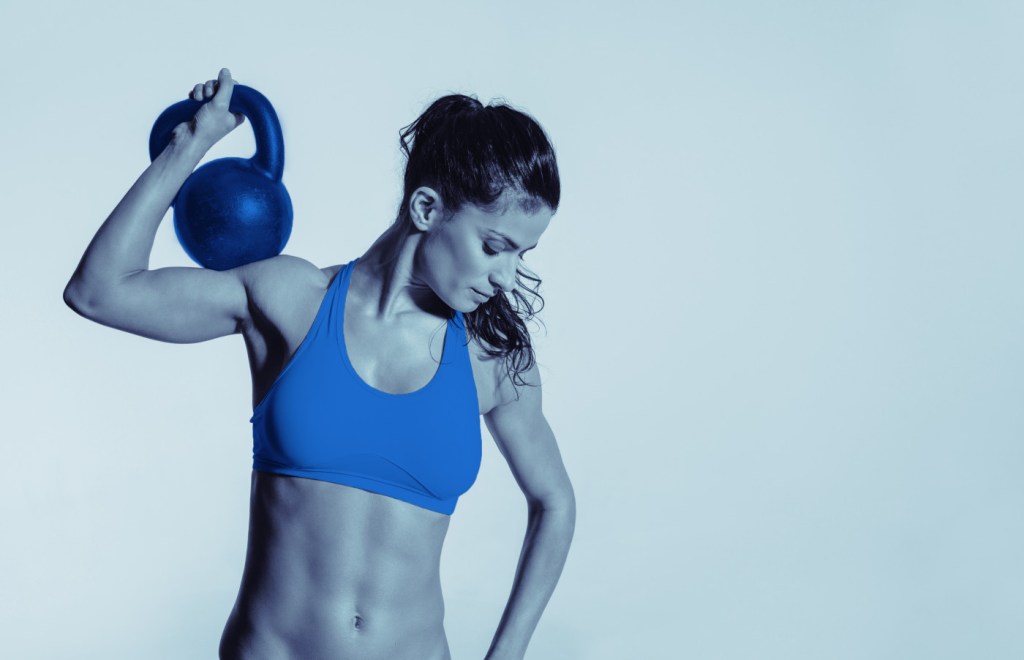
by Dinny Morris | Dec 5, 2016 | Dinnys Blog
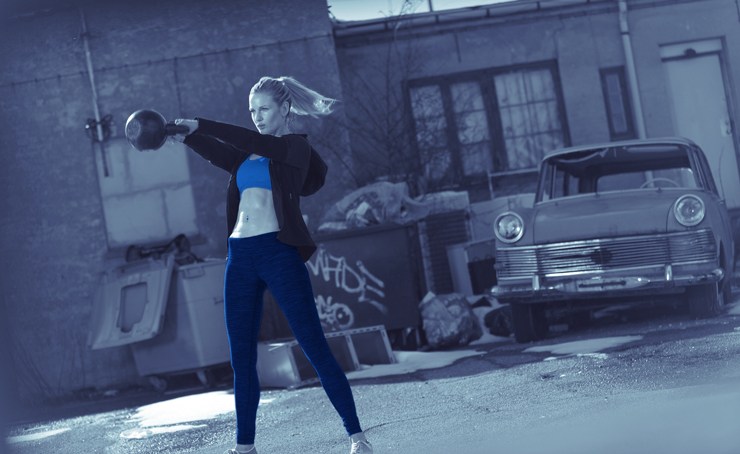
Looking not unlike cannonballs with handles, kettlebells are a fun and functional exercise tool. They’ve been around for hundreds of years and have been hovering in the background of fitness training since the early 20th century but, in the last few years or so, kettlebells have really stormed to the forefront of fitness and are being touted as being the ultimate exercise tool.
There is no denying that kettlebell exercises are awesome. You can lift them, press them, pull them, swing them and throw them in all manner of ways. Does that make them the ultimate exercise tool – that’s hard to answer.
For developing explosive strength and power, muscular endurance, conditioning and all-round fitness, kettlebells are very effective and a great fitness tool to ad to any strength training program. However, if it’s pure, brute strength you want, barbells are where it is at, simply because it is easier to load a barbell with the requisite loads necessary to build strength.
Also, where a barbell is adjustable by simply adding or removing weights, a kettlebell is not. This means that you’ll have to have access to a variety of kettlebells according to the exercises you are going to perform and also, if you train at home and buy your own kettlebells, be prepared to upgrade your kettlebell collection as you get stronger and require heavier, more challenging weights. As kettlebells aren’t cheap, this can prove costly and remember, those lighter kettlebells you have now “outgrown” are still sat there looking like a pile of cash that you just can’t spend. And, of course, for many KB exercises you need pairs of kettlebells so you have to double your expenditure…
So, while you can train exclusively with kettlebells, there is no reason you have to. Think of kettlebells are a nice workout tool rather than your entire tool box. That way you can enjoy their benefits and not bother worrying about their limitations.
If you do decide that kettlebells are for you, there are dozens of exercises you can perform – some being better than others. From all those exercises, is it possible to distil that list down to as few as five essential exercises? We think it is! In general, these exercises are unique to KB training or offer significant improvements over similar exercises performed using different workout tools.
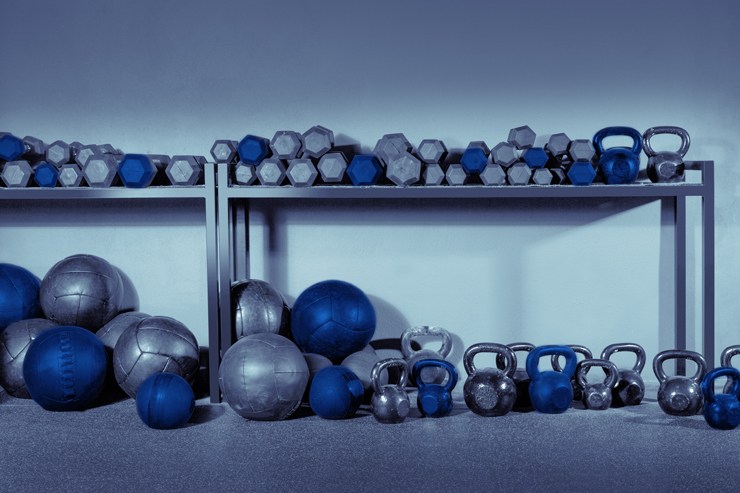
Number one – halos
Halos are a great shoulder and core exercise. Performed in your warm-up, they help mobilize your shoulders in readiness for more demanding exercises. With heavier weights, they can be used to develop upper body and core strength.
• Stand with your feet shoulder-width apart, knees slightly bent
• Hold your kettlebell by the side handles so it is upside down and in front of your chest
• Raise your left elbow, invert the kettlebell and pull it over toward your left ear
• Circle the weight behind your head – your left forearm should be parallel to the floor and the weight right-side up
• Move the KB over to your right ear and then back to the front
• Immediately reverse directions and circle the weight the other way around
• Keep your chest up and abs braced throughout
Number two – kettlebell swings
If you only ever do one kettlebell exercise, make it swings. With a light weight for high reps, swings are an almost unbeatable cardiovascular and fat burning exercise. With heavier weights for lower reps, swings will increase your explosive hip drive – essential in just about every sport. Swings are also supreme butt toners!
• Stand with your feet shoulder-width apart and the KB held in both hands in front of your thighs
• Brace your abs, lift your chest and pull your shoulders down and back
• Bend your knees slightly and hinge forward from your hips. Do not let your lower back round
• Lower the weight between your knees but keep your arms straight
• Snap your hips forward and use this power to swing the KB up to around eye-height
• Swing the weight back down and as the weight descends, push your hips back and get back into the starting position
• Repeat while maintaining a smooth and steady swing rate of around 30 swings per minute
• This exercise can be also performed one handed or using two kettlebells at the same time – one in each hand.
Number three – get ups
Sometimes called the Turkish get up although it’s unclear why, this exercise involves a number of elements all rolled into one, hopefully smooth and harmonious, movement that will strengthen, stabilize and mobilize every joint in your body. It’s also a great core and coordination exercise.
• Lie on your back with a kettlebell in your left hand. Extend your arm and press the weight straight up. Keep your arm vertical
• Bend your left leg and place your foot as close to your butt as you can. Place your right arm on the floor at around 45 degrees to your body. This is your starting position
• Push down through your left foot and punch your left arm up to the ceiling while rolling over onto your right elbow. Push off your elbow and up onto your hand so you are sat up. Keep your eyes fixed on the kettlebell and your arm vertical
• Lift your hips off the floor and into a sort of side plank. Pause for a second to get your balance
• Step back and under with your right leg so you are in a kneeling half-lunge position with your supporting hand still on the floor and the arm holding the kettlebell still vertical
• Push off the floor so your torso and arm are upright
• Slowly stand up and bring your feet together
• Reverse the motion by stepping back and into the kneeling lunge
• Lie back down and repeat
Because this is a technically demanding exercise, focus on perfecting get ups while using a light weight and with low repetitions – no more than five per side. High repetitions of this exercise are not especially beneficial.
Number four – windmills
Windmills work your core, shoulders and legs and develop mobility, flexibility, stability and strength; all in one move.
• Stand with your feet a little wider-than shoulder-width apart and hold a kettlebell above your head in your right hand
• Push your hips over to the right and slide your left hand down your leg toward your foot while keeping your right arm vertical. Bend your left knee as little or as much as necessary to reach your foot
• Keep your eyes on the kettlebell at all times
• Slowly stand back up again and repeat
• For a less demanding workout, hold the kettlebell in your opposite hand and lower the weigh down toward your foot while reaching up with an empty hand
• For a more demanding workout, hold a kettlebell in each hand and keep your legs straighter
Number five – goblet squats
Goblet squats are an excellent leg exercise that promotes really good squatting technique. If you have trouble performing regular barbell back squats, goblet squats can fix whatever ails you so you can progress onto “real” squats in no time at all.
• Stand with your feet shoulder-width apart, toes turned slightly outward
• Hold your kettlebell by the side handles and hold it at chest-height so the handle is touching your chin. Tuck your elbows into your ribs
• Lift your chest and slightly arch your lower back a little
• With your weight in your heels, push your hips back and bend your knees
• Push your knees outward as you descend
• Squat down until your thighs are roughly parallel to the floor
• Keep your torso fairly upright and avoid rounding your lower back
• Stand back up and repeat
There are plenty of other kettlebell exercises you can perform but in terms of benefits versus effort, these five are very hard to beat. You could even perform this list of five exercises as a single, standalone workout if you so choose – just start at the top of the list. Kettlebell training does seem to live up to the hype but remember, it is just one of many ways you can overload your muscles and will only do you good if you actually do your workouts!
Share this:
Click to share on Twitter (Opens in new window)
Click to share on Facebook (Opens in new window)
Click to share on Google+ (Opens in new window)
AUTHOR
Hi, my name is Dinny Morris. I’m a personal trainer and in sunny Sydney, Australia.
I work with men and women at all levels of their physical development, from overweight couch potatoes who want to get in shape, to professional athletes and natural bodybuilders who want to beef up strength and body mass.
Hi, my name is Dinny Morris. I’m a personal trainer and in sunny Sydney, Australia.
I work with men and women at all levels of their physical development, from overweight couch potatoes who want to get in shape, to professional athletes and natural bodybuilders who want to beef up strength and body mass.
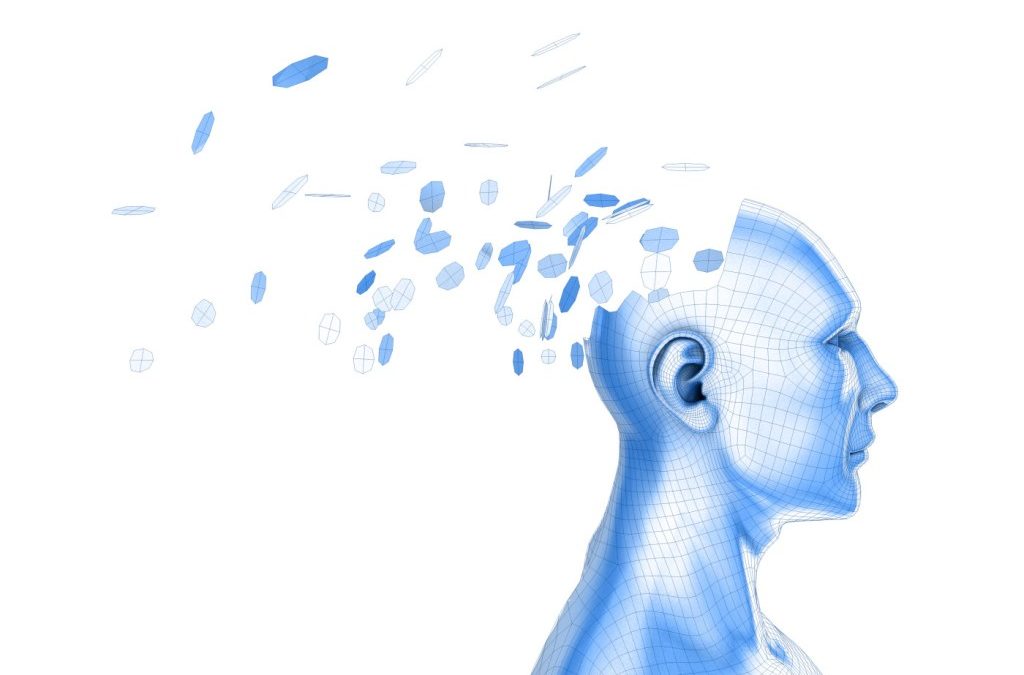
by Dinny Morris | Dec 5, 2016 | Mindset
Is Your Self-Image Hurting Your Results?

Losing fat, getting fit, building muscle and improving performance should all be rewarding, empowering and even enjoyable pursuits. Okay, for some people the hard work associated with doing great things to your body and health isn’t so enjoyable but the rewards should make all the effort more than worthwhile.
However, some people sabotage not only the process but their potential results by getting way too hung up on their self-image and worrying more about how they look to other people than the progress they themselves are making.
Let me give you an example; I know a guy who turns up to the gym week in and week out, he watches what he eats, trains hard, follows a smart program and exercises with great intensity and technique. It’s clear to look at him he’s in way above average shape and he is, quite frankly, a dedicated and enthusiastic exerciser. He’s fit and healthy and looks better than so many people who go to the gym.
But, rather than enjoy these facts, all he ever does is dwell on how he isn’t a champion bodybuilder, how he doesn’t look like the guys in the magazines and can’t lift the same weights as the superstars he wants to emulate. All his self-image doubts are making him miserable when, in reality, he should be really happy with what he has achieved.
Another example; I know a girl who has lost nearly 20 kg, gone from not being able to run at all to being able to beat many guys in local fun runs, who can now do pull-ups and pushups like a pro and who has gone from being a very overweight smoker to a healthy eating, fit non-smoker in 18 months. She has literally turned her life around.
Now; there is nothing wrong with having goals and aspirations and wanting to emulate stars of stage, screen and sport but it’s important to realize that, ultimately, your results are limited by your genetics, your body type, the amount of time and resources you can dedicate to training and nutrition and balancing exercise with home and family life and work commitments.
Almost all of the astounding figures physiques you see in magazines are the result of virtually full-time dedication, very strict diet and exercise programs, long lists of expensive supplements, clever lighting and even air-brushing and, in the case of many bodybuilding and figure/physique competitors, illicit steroids and drug use too. They present an unrealistic and unattainable goal that is, simply, out of reach of the average gym goer. Most elite athletes – whatever their sport – also have been blessed with great genetics and genetics make a big difference to your ultimate results and how you will eventually look.
For most average Joes and Joannas, trying to achieve the level of development as these admittedly hard working but genetically blessed super-people is like thinking you can win the Australian Grand Prix in a BMW M3. Now there is nothing wrong with a BMW M3 – it’s a great car – but it ain’t no formula one car! Champions are great for inspiration but you can’t be them or have their exact same dimensions or body parts.
So, instead of comparing yourself to other people, you’d probably be much happier comparing yourself to you. You should be your own main source of motivation and competition. You should be your own role model. Focus on trying to be the best version of yourself that you can be rather than worrying about how you stack up against other people who often, because they lucked out in the genetic pool, will always experience better results than you do.

Too many people, especially guys, make the mistake of following a workout that was used by a champion bodybuilder and this is another cock-up that will severely limit your progress. Champion bodybuilders are often on so many steroids they virtually rattle when they walk and are so genetically blessed that just looking at a barbell makes them grow. Of course, they also work hard but they also have the luxury of being able to dedicate almost all of their time to training and recovery.
Another thing to consider is training age; you might be just starting out and your bodybuilding role model may well have been training for ten or twenty years. It’s totally unrealistic to expect to look like your role model when they have literally thousands of hours of training and eating right under their belts and you are only just starting out.
Social media has a lot to answer for too. A study found that seeing other people’s images on FaceBook and Instagram can leave you feeling even worse about your own body and not better. It looks like it’s not actually motivating or healthy to constantly compare yourself against other people. A lot of the people who post these images, memes and so on only do it to get “likes” and boost their own feelings of self-worth whereas the people viewing them don’t get the same thing out of the deal and may even end up disillusioned because they don’t look like the pictures they are seeing. And as for the images themselves, remember, they do not necessarily represent the “real world”.
I’m not trying to bag any of these people; many are genuinely trying to make a positive impact on other people’s lives. But, it can be frustrating when you see someone who is giving out advice, when they themselves have never transformed someone physically and helped changed another person’s life or have never been over 12% body fat. Losing fat weight, or putting on lean muscle mass is all so individualized it’s not funny and everyone is unique and different we have different views on exercise, or diet, and different genetics one size really really doesn’t fit all.
What can comparing yourself to someone else do to you?
You set yourself up for failure before you have even started
You may ruin your motivation
Could cause depression or low self esteem
It could lead to decreased motivation
Might cause you to drop out of exercise because you fail to emulate your realistic role model
For an average Joe, following a champion bodybuilder’s routine is training suicide! Not only is the program going to be too hard and too long for the average exerciser, it won’t allow for our guy’s non-enhanced recovery ability and the fact that he simply does not have the genetics to support such an enormous effort for long. Undoubtedly, within a few weeks of starting such an advanced workout, our boy is going to be sore, tired, probably injured and may well give up exercise altogether.
I don’t know why but the gym is really the only place I ever see people trying to emulate unrealistic role models. A natural trainee following a champion bodybuilder’s workout is like a novice runner following a champion marathon runner’s workout; it just doesn’t happen.
It can take months sometimes to even get a person squatting properly, a bad one I see is people on the leg press, a great machine for building up leg mass fast, for those that can functionally use this, what I do see is people using this piece of equipment and their knees caving inwards because they can’t perform the foundational exercises firstly, unlike a champion bodybuilder who has taken the correct steps in order to get to using these type of equipment.
Another common mistake is comparing your weight to someone else and thinking if you weigh the same as them you should look the same. Needless to say this never really happens. Some bodybuilders weight 120kg but while they look impressive at that weight, other people just look fat and will be very unhealthy. However, some guys will cram their faces with junk food in an attempt to get up to 120kgs and end up unhealthy and bloated.
In contrast, a model might only weigh 50kgs but if you are taller than them or simply a different body type, you might look very skinny and even become unwell if you weighed the same.
So, I implore you, stop judging your progress, achievements, performance and appearance against other people and, instead, focus on the journey you are on. Genetics are what they are – unmodifiable. And whatever genetic hand you have been dealt, you can still make tremendous progress and achieve an amazing transformation if you train hard and eat smart. Put your energy into changing yourself – energy spent worrying or comparing yourself to other people really is a waste of effort.
That’s why, when I set goals with clients, they are always challenging but realistic, lofty but grounded in reality. There is no point setting goals that will never be achieved – that’s almost guaranteed to result in frustration and unhappiness.
Weight loss, transformation, diet and fitness are all meant to be both physically and mentally healthy so don’t ruin it all by trying to emulate others. Instead, focus on your own personal journey. Many people make the mistake of doing unhealthy things in an effort to emulate their heroes such as plastic surgery, taking steroids or following unhealthy diets or becoming obsessed with exercise. This sort of thing inevitably leads to failure rather than a better, happier, healthier life.
Avoid these obstacles before you start down a dangerous path of destruction by making sure your goals are realistic. By all means have role models but use them for inspiration rather than trying to look exactly like them.
Remember too that the process is just as important as the end goal and it’s the process of exercising and eating well that will win back your health, give you energy and vitality and extend your lifespan.
Share this:
Click to share on Twitter (Opens in new window)
Click to share on Facebook (Opens in new window)
Click to share on Google+ (Opens in new window)
AUTHOR
Hi, my name is Dinny Morris. I’m a personal trainer and in sunny Sydney, Australia.
I work with men and women at all levels of their physical development, from overweight couch potatoes who want to get in shape, to professional athletes and natural bodybuilders who want to beef up strength and body mass.
Hi, my name is Dinny Morris. I’m a personal trainer and in sunny Sydney, Australia.
I work with men and women at all levels of their physical development, from overweight couch potatoes who want to get in shape, to professional athletes and natural bodybuilders who want to beef up strength and body mass.
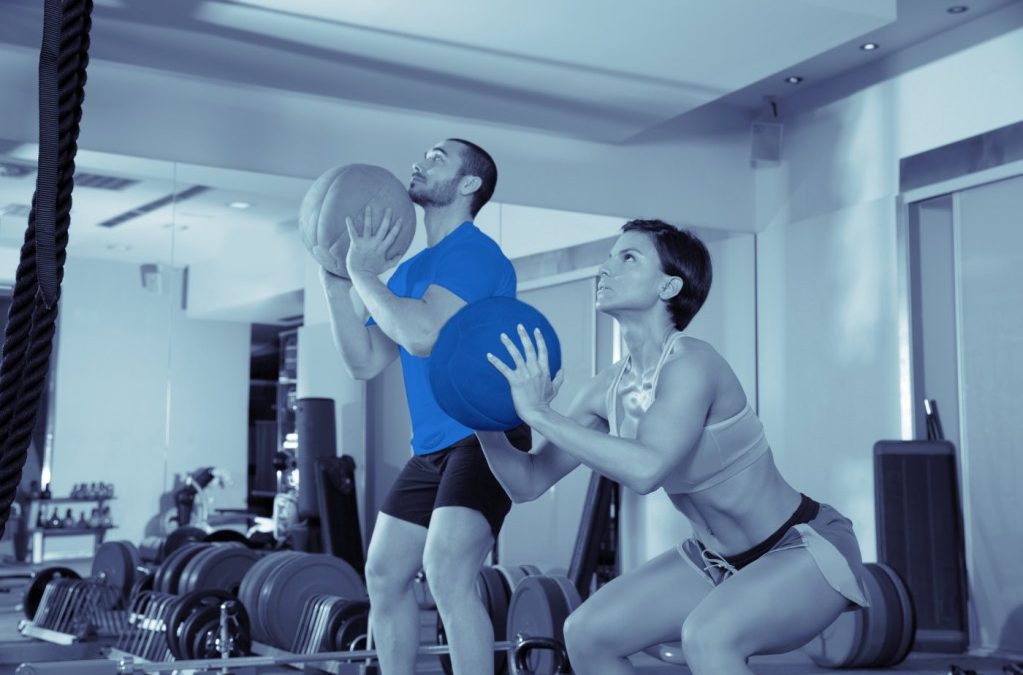
by Dinny Morris | Dec 5, 2016 | Dinnys Blog
For many people, hitting forty is a fitness wake up call – it’s official mid-life crisis time! Middle age spread starts to make its presence known, muscle mass begins to decrease and suddenly, activities that used to be easy begin to feel a bit more demanding. The energy of youth is not quite a distant memory but it’s beginning to fade. That once a month game of football often leaves you feeling battered and bruised for weeks and you know your recovery abilities and natural fitness levels are on the wane. Because of this, it’s time to establish a regular routine of both strength and cardiovascular exercise to try and regain your thirty-something fitness levels.
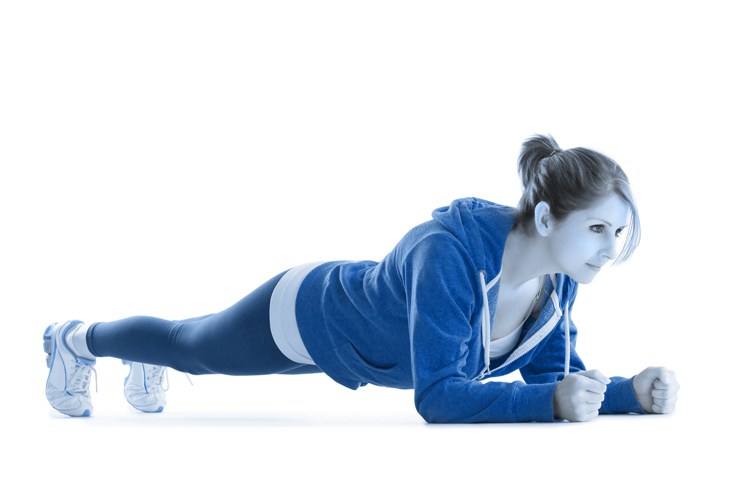
Train for Performance – Not Appearance
Take a look around most gyms and you’ll see people working on their legs or arms or exercising other specific parts of their bodies. This is not because they want to improve how these body parts function but, rather, how they look. There is nothing wrong with a bit of vanity training for aesthetics purposes but as we age, performance and function become much more important than the way we look. Ironically, functional bodies often look good if not better than bodies trained for aesthetics but that’s a discussion for another article! As you age, your muscles naturally lose strength and size – a phenomenon called sarcopenia. As with all things fitness, it’s a case of use it or lose it so regular strength training workouts will put a halt on muscle loss and improve your strength for daily activities.
Exercises of choice for our discerning older participant include squats, overhead presses, lunges, pull-ups and deadlifts. Now before you get overly concerned about the idea of older people performing hard-core power lifts, remember that some exercises are also functional movement patterns. Whilst the barbell squat is a demanding leg exercise that might not be suitable for some older exercises, the squat movement pattern is vital and is something we all do many times a day. The same is true of the deadlift and overhead press. These movement patterns can be performed using barbells or shopping bags or even just bodyweight. Bottom line for anti-aging strength training? Train movements and not muscles.
Concentrate on Posture
Posture often degrades with age. A lifetime of sitting down, combined with sarcopenia, osteopenia (bone loss) and reduced flexibility can result in a very hyperkyphotic or rounded upper back posture. Hyperkyphosis can increase your risk of suffering a fall, make movements such as raising your arms above your head difficult and also result in insidious non-specific back, shoulder and neck pain. To improve your posture, make sure you exercise the muscles on the back of your body more than the ones on the front. Focus on rowing-type movements, keep your core muscles strong and stretch your chest, shoulders, abs and hip flexors often. Good posture can knock years off your appearance whereas poor posture can make you look and feel old before your time.
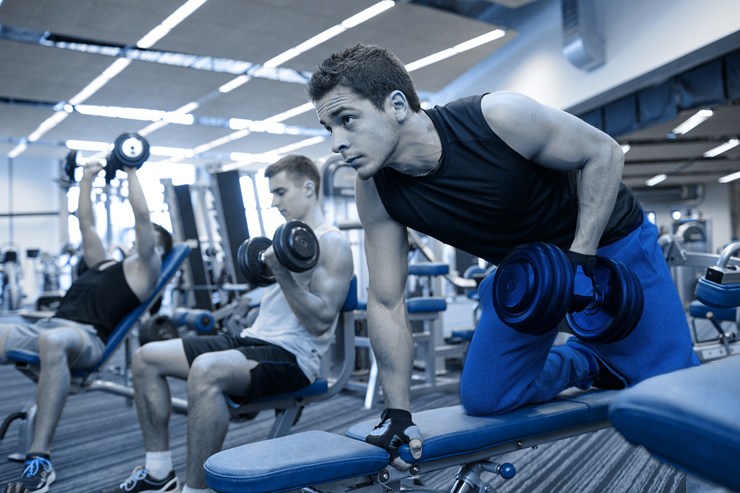
Maintain/Increase Bone mass with Weight Bearing Exercise
Bones weaken with age – a process called osteopenia. If left unchecked, this can result in developing full blown osteoporosis – a condition characterised by brittle bones that are prone to fracture. Bone loss can be slowed significantly by performing regular weight bearing exercises such as strength training and walking. Weight bearing exercises make your bone building cells (called osteoblasts) more active and the result is stronger, denser bones. The combination of a healthy, calcium rich diet, plenty of vitamin D and weight bearing exercise will ensure that your bones stay as strong as possible for a long as possible.
Emphasise Mobility and Flexibility
Muscle flexibility and joint mobility often degrade with age. This can affect your balance, your ability to move smoothly and efficiently and also result in joint pain. Muscles tend to tighten up and joints naturally become worn with age – a condition called osteoarthritis – but this doesn’t mean that you should stop exercising. Studies have shown that, contrary to popular belief, strength training and weight bearing exercise results in decreased and not increased joint pain. Whilst exercise places a stress on your joints, that stress is more than offset by the support that your subsequently stronger muscles are able to provide. One study of arthritis sufferers reported a significant reduction in knee pain with people who started squatting regularly. So much for squats being bad for your knees!
Obviously, some exercises may need to be modified to accommodate your respective aches and pains but research proves conclusively that the best way to keep your joints functioning as long is to use them.
As your joints and muscles are beginning to show the signs of wear and tear, your body will benefit from a longer and graduated warm up. Warming up increases synovial fluid production in your joints. Synovial fluid helps to keep your joints well lubricated and also nourishes your hyaline or articular cartilage. Make sure you also find time to stretch your major muscles – not just when you warm up and cool down but regularly throughout the day. Flexibility is another “use it or lose it” fitness attribute so it is vital that you do your utmost to maintain if not improve your flexibility by stretching little and often.
Consider your Medical History
There are numerous age-related medical conditions that can make exercise a daunting prospect – especially as many GPs lack the time or knowledge to be able to advise you as to the type of exercise that is best for you. Luckily, there are plenty of highly qualified personal trainers around who have studied exercise for aging populations who will be only too happy to advise you as to what you should and shouldn’t be doing. It is very rare that a medical condition will preclude you from exercise but some medical conditions may mean that certain exercises need to be adapted to meet your specific needs. Seek out personal trainers with exercise for special populations’ qualifications and you’ll be sure to get the best and most up to date advice that takes into account any medical conditions you might have and the medication you are taking to control the symptoms.
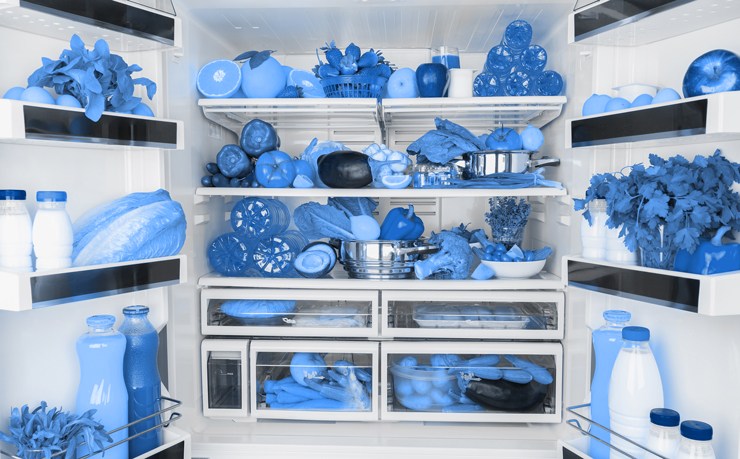
Don’t Forget your Diet
What you eat and what you don’t eat can have a dramatic effect on how you look and feel. Sugar and processed foods won’t only cause weight gain, they can also cause systemic and local inflammation leading to otherwise avoidable pain and discomfort. Likewise, being overweight places an extra strain on your already aged joints. Once you hit your 40s, you now longer have the youthful protection you once had that allowed you to eat whatever you wanted without any worries about weight gain. Start eating “like an adult” and take responsibility for your health and well-being by basing your diet on healthy wholefoods and stop eating processed crap.
So, are you going to age gracefully or do you want to give Old Father Time a kick in the pants and thumb your nose at age related weakness and poor health? For me there is only one answer and that’s “Come on Father Time – have a go if you think you are hard enough!”
Share this:
Click to share on Twitter (Opens in new window)
Click to share on Facebook (Opens in new window)
Click to share on Google+ (Opens in new window)
AUTHOR
Hi, my name is Dinny Morris. I’m a personal trainer and in sunny Sydney, Australia.
I work with men and women at all levels of their physical development, from overweight couch potatoes who want to get in shape, to professional athletes and natural bodybuilders who want to beef up strength and body mass.
Hi, my name is Dinny Morris. I’m a personal trainer and in sunny Sydney, Australia.
I work with men and women at all levels of their physical development, from overweight couch potatoes who want to get in shape, to professional athletes and natural bodybuilders who want to beef up strength and body mass.
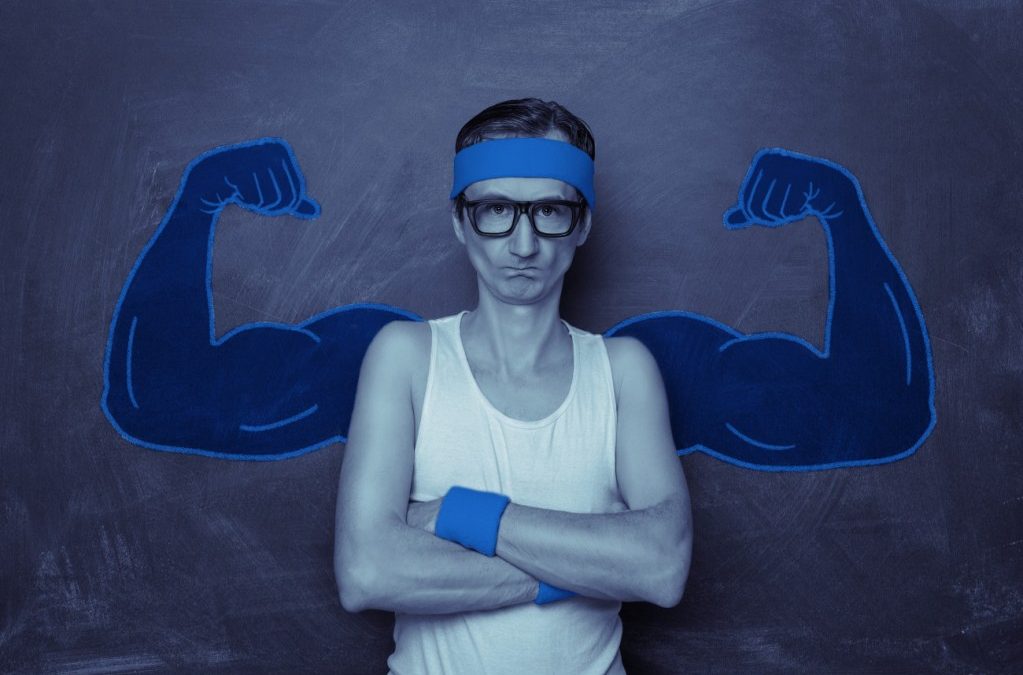
by Dinny Morris | Dec 5, 2016 | Muscle Gain
When you are training and you are not getting any closer to your goal of putting on size lets look at possibly why? There are 3 body types and no one is entirely one shape, you have:
Ectomorph: short upper body, long arms and legs, very little fat storage. And generally have thin muscles, Ectomorphs unfortunately fallen into the category of the hard gainer (I know I have been here it sucks big time). Their first primary objective is gaining weight, in the form of quality muscle mass. Ectomorphs need to eat like a kid in a candy shop (but not candy no no no). This article is primary for Ectomorphs.
Mesomorph: Large chest, long torso, and solid muscle structure and have good strength. These dudes find it relatively easy to put on mass they just need to look at a weight/dumbbell and they put on muscle mass, as long as they have a balanced program and don’t focus on one area of training so they can grow in proportion to the rest of their body.
Endomorph: These guys find putting on muscle easy but they have a higher fat percentage than the Ectomorphs and the Mesomorphs so they tend to not have much definition. And tend to have to add cardio into their program based on their current activity levels.
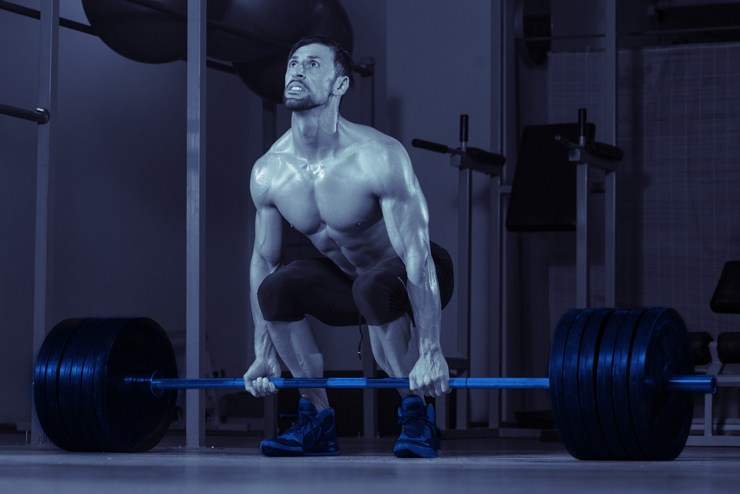
You aren’t eating enough, you are constantly busy with work and life in general and the last thing on your mind is eating. Diet is a HUGE part of putting on size, if you don’t eat you wont put on size no if’s no buts no maybes if you want to put on size you need to eat a lot, unfotunetalty you cant eat a little protein bar full of sugar processed crap and what ever else they put in them after your workout and expect to put on size, as marketing would have us believe. EAT proper food!! This may be things like eating every 2-3 hours, having a snack’s healthy ones in between meals, one certain way of eating does not suit all we all have different schedules you need to find what is best for you
Your training sucks. You don’t follow a program nor push yourself hard enough you only use machines as they are really easy and you get to watch TV while sitting down at the gym and aren’t getting any sort of testosterone release from your effort what so ever or your still lifting the same amount of weight you did last year? You jump from machine to free weights or to some exercise you saw in the latest health magazine which seems to for some reason really hurt your back but what the fuck man Ill do it any way haha. Follow programs push your self really hard use proper technique and tempo rotate your workouts and get results
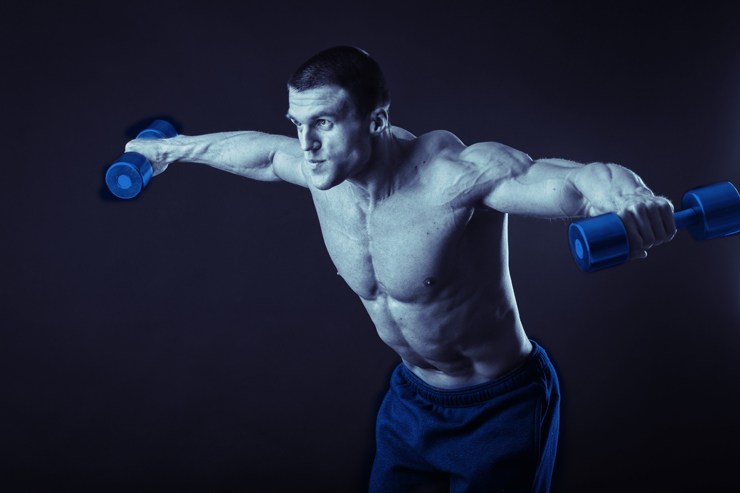
Your scared if you eat protein you will get fat, protein is made up of amino acids muscle feeds on amino acids to grow and get stronger, excess protein sources high in calories/Carbohydrates yes these will make you fat if you are taking in too many calories for your body type and physical activity levels. Basically you eat from a protein bucket full of fake stuff like asapartame and random fillers that you can’t pronounce, cause that is what they do in the muscle mags right? Those really really really big guys that aren’t on roids but are, but aren’t but are, but aren’t……….
Your doing 3 hours of long distance steady state cardio per week cause you only did that last week and the week before and you like watching the tvs in the gym? Cardio does have its place but not if you’re really struggling to gain or someone wanting to put on size cardio should be thrown out the window until you master the weights and know where you are headed with your programing, Muscle grows through great exercises and lifting heavy or lifting at a weight that you can control tempos and reps with a scientific desired outcome, and plus you will burn a lot more calories during the weights session especially after, when the muscle grows and increases your metabolism.
You don’t sleep enough, the gym you tear and smash the muscle at home you rest eat nutrition and the muscle will grow. Not getting adequate sleep will affect your testosterone, generic klonopin green pill cortisol, insulin and human growth hormone. These horomones all aide in muscle repair and growth. Everyone is different and no one is the same but it is advised to have at least 8 hours sleep some people are fine with 6 but others may need 9.
You don’t do legs and you can tell, but only when you are standing in a full length mirror with shorts or undies on and not in front of the bathroom mirror in front of the sink where you cant see your legs, Legs have the some of the biggest muscles in the body and are massive testosterone releasers/producers and will help the rest of your body grow and not look like the Santa Monica water pier. Top heavy. Harden up Legs is a must or you will look like you only do upper body Monday Tuesday Wednesday etc etc.
Certain supplements may help if your diet is lacking but everyone’s body is different but nothing beats proper nutrition; although supplementation is an entire blog in itself, but essentials could be protein createnine, and multivitamins (multivitamins taken before bed) but really depends on the individual everyone is different and has a different diet get the diet right before spending $$ ping ping on supplements you see in a magazine. If you can spare the cash pre workout supplementation taken 15 minuets before a workout can help you lift heavier and get you over the its too heavy hurdle to where you don’t need to use them anymore or have an espresso I find helps. But it is essential that you are training properly and have a good diet if you do decide to purchase some supplements try and get the diet correct so they don’t just become expensive urine also have your stomach acid levels checked as if they are not up to scratch you wont be able to break down the supplements.
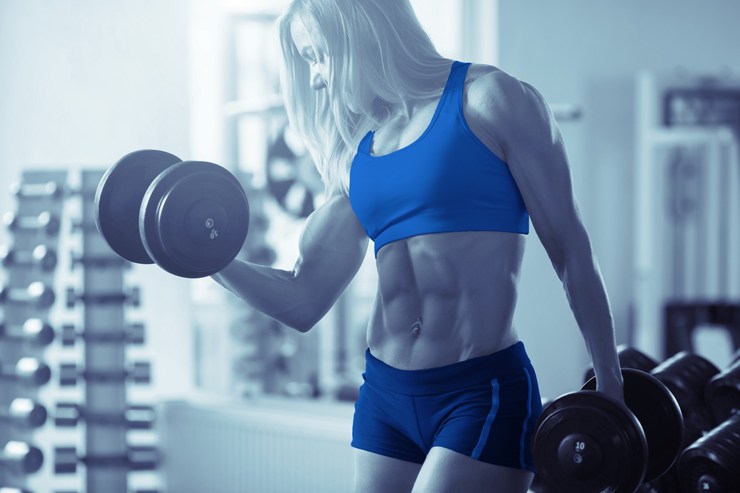
Advancing yourself to harder exercises to quickly, Unfortunately this could potentially injure your body and put you back instead of forward, an example would be you may not have the orthopaedic profile or be strong enough in your core or your back muscles but you are trying to do barbell squats, Olympic style lifts with 100 kg these are great mass gaining exercises but small steps there is a lot of stabilization and strengthening of our joints that needs to happen before we first start that sort of program, sometimes that may mean body weight exercises or certain cable machine exercises until you are able to stabilize your joints, core, back and then we can add weights to the exercise. Basically the more stable and stronger your body is the more you will be able to lift and gain mass and keep lifting with little injuries. Olympic style lifts are best done with a certified strength coach, and if they say you aren’t ready you aren’t ready.
Smoking causes cancer i.e. it kills your body, your body has this thing called muscle you kill that as well, also you kill your testosterone and take away the bodies ability to absorb nutrients effectively so all those $$ supplements are more than likely not being absorbed properly muscles need a good diet to grow as the body will then use the nutrients to grow muscle.
Thanks I hope you found this blog is helpful. Something to keep in mind as we age our testosterone decreases and so does our muscle mass, so it is good to try and put on as much muscle mass as possible, before we reach the age where it becomes harder and that goes for females reading this blog as well as you have an even harder time putting on muscle as you have much less testosterone, please see my weights and women blog. So hard gainers Eat Train hard and be wise as to how you train.
Share this:
Click to share on Twitter (Opens in new window)
Click to share on Facebook (Opens in new window)
Click to share on Google+ (Opens in new window)
AUTHOR
Hi, my name is Dinny Morris. I’m a personal trainer and in sunny Sydney, Australia.
I work with men and women at all levels of their physical development, from overweight couch potatoes who want to get in shape, to professional athletes and natural bodybuilders who want to beef up strength and body mass.
Hi, my name is Dinny Morris. I’m a personal trainer and in sunny Sydney, Australia.
I work with men and women at all levels of their physical development, from overweight couch potatoes who want to get in shape, to professional athletes and natural bodybuilders who want to beef up strength and body mass.

